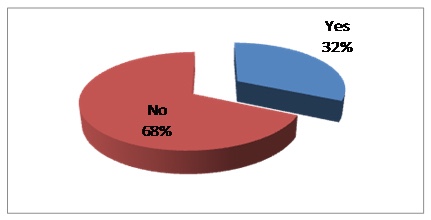
Figure 1. Lecturers of public universities who used e-learning as a mode of teaching.
Volume 17, Number 3
George L. Makokha1 and Dorothy N. Mutisya2
1Kenyatta University, 2South Eastern Kenya University
The purpose of this study was to assess the status of e-learning in public universities in Kenya. Data were collected using questionnaires administered to both students and lecturers randomly sampled from seven public universities. Questionnaire responses were triangulated with interviews from key informants and focus group discussions (FGDs). Data were analyzed qualitatively and through use of descriptive statistics. Findings revealed that e-learning is at its infant stage in universities in Kenya. Majority of universities lacked senate approved e-learning policies to guide structured implementation. A few lecturers (32%) and students (35%) used e-learning and few courses (10%) were offered online. Majority of online uploaded modules (87%) were simply lecture notes and not interactive. Again, universities in Kenya lacked requisite ICT infrastructure and skills. The study recommends that universities partner with the private sector to improve ICT infrastructure, build capacity, and standardize e-learning programs in the country.
Keywords: e-learning, e-learning status, e-learning policy, public universities, Kenya
There has been an unprecedented growth in demand for university education in Kenya; unparalleled anywhere in the East African region (Gudo, Olel, & Oanda, 2011; Boit & Kipkoech, 2012). A large number of people are enrolling for university education today than any other time in the recent past (Nyerere, Gravenir & Mse, 2012; Boit & Kipkoech, 2012). Thus, the demand for university education continues to surpass the supply. Among the measures public universities are putting in place to cope with increasing demand for higher education and enrol more students is a change in the method of delivery of content from the traditional face-to-face (F2F) to e-learning, which involves the use of computer and network-enabled transfer of skills and knowledge. E-learning is preferred because it is flexible and suited to distance learning. According to Hollow and ICWE (2009), this mode of pedagogy is considered beneficial to the users for various reasons, including the fact that it has the following characteristics:
Arising from the above benefits, universities throughout the world are increasingly adopting e-learning. For instance, almost a quarter of all students in post-secondary education in the USA were taking fully online courses in 2008 (Allen & Seamen, 2008). In Africa, e-learning is taking root in Nigeria (Kamba, 2009), Tanzania (Ndume, Tilya, & Twaakyondo, 2008), Uganda (Kasse & Balunywa, 2013), and Zimbabwe (Mpofu et al., 2012). In Kenya, a number of universities today have started e-learning programs, a measure considered to have a high likelihood of increasing accessibility to university education. This study, therefore, set out to assess the status of e-learning in public universities in Kenya, with a view to highlighting the opportunities that can be exploited to promote its use in public universities in Kenya.
Several studies have been done on status of e-learning in universities in Africa. Hollow and ICWE (2009) reported on a survey of 147 e-learning practitioners from 34 countries in Africa. In the report it is noted that e-learning is still developing although very few lecturers are trained extensively on how to use it. There are also financial constraints to meet the cost of bandwidth and other e-learning infrastructure.
Kamba (2009) examined the status of e-learning in 18 selected universities from different specialization areas in Nigeria. Findings of the study showed a high degree of awareness of e-learning among the universities. But this notwithstanding, he established that adoption of e-learning was impeded by a low level of investment and lack of commitment to develop e-learning applications. The latter was described as having been below expectation according to the study. What was intriguing was the fact that most of the staff and students in the universities used internet related e-learning sites mainly for the sake of finding related information for their research, since their libraries could not afford to provide them with adequate and current materials, but not for the sake of formal online learning. The study also found out that some of the universities have Web pages that are more often than not used for advertisement of the universities but not for e-leaning activities. Encouraging though was the fact that some of the universities were planning to increase investment in e-learning.
A study conducted in Zimbabwe showed that the majority of the lecturers (97.5%) facilitating open, distance and e-learning (ODeL) had no experience in distance education (Mpofu et al., 2012). Effective use of distance learning technologies demands that teaching staff be properly trained in using distance education as a mode of delivery. To date, few African scholars are familiar with teaching in an online environment. This situation poses a major challenge in introducing distance education on the continent.
Walimbwa (2008) observes that despite e-learning growing rapidly worldwide, East African universities are yet to fully maximize its potential. This research was based on University of Dar es Salaam (Tanzania), Makerere University (Uganda), and University of Nairobi (Kenya). It was found that lack of skills and sufficient human capacity contributed to low e-learning implementation. Limited Internet bandwidth and no policy harmonization were also significant factors that were hindering e-learning from growing in these universities.
In a related study, Kasse and Balunywa (2013) assessed the implementation of e-learning in Ugandan institutions of higher learning namely Makerere University of Kampala (MAK); Makerere University Business School (MUBS); Kampala International University (KIU), and Islamic University in Uganda (IUIU). The choice of these institutions was based on the fact that they are the highest-ranking institutions in Uganda in terms of the quality of education, student population, and ICT adoption. Findings of their study showed that e-learning was used mostly as a means of delivering learning material (80%), minimally used to conduct discussions (12%), and to conduct assessment (2%). Their study revealed major infrastructural and technical incompetence, and attitudinal challenges (by staff and students) that limited full-scale adoption of e-learning in these institutions. Some of the infrastructural challenges included lack of electricity and unavailability of Internet connectivity.
A study conducted in some universities in Tanzania found out that, as is the case with other African countries, the implementation of e-learning was still very low despite the opportunities provided by the open source technology and the supportive environment created by the Government (Sanga, Sife, & Lwoga, 2007). Among the ten universities studied, only the University of Dar es salaam (UDSM) had managed to implement e-learning platforms such as WEBCT and Blackboard, which are e-learning proprietary software. The other universities such as Sokoine University of Agriculture (SUA), Mzumbe University, and Open University of Tanzania (OUT) possess basic ICT infrastructure such as a local area network (LAN), Internet, computers, and CD and DVD facilities that form the basis for the establishment of e-learning platform; but, the implementation of e-learning was minimal.
Extensive research on the acceptance of e-learning in higher learning institutions in Tanzania identified several factors that challenge its implementation (Ndume et al., 2008). For example, the study identified lack of capacity analysis before online e-learning programs as a major challenge facing its adoption in the country. A negative learning culture towards e-learning was also found to be another obstacle impeding its implementation. Electricity power interruptions (outages) and inadequate ICT infrastructure for e-learning were also found to be a major challenge. However, it was observed that there was an existing initiative by the government, private companies, and non-governmental organizations (NGOs) to improve ICT infrastructure. On the brighter side, the study revealed that reduction of taxes on computer items had enabled a good number of students to procure their own personal computers or laptops.
Nyerere et al. (2012) investigated the status of and the various challenges that hinder realization of the full potential of open distance and e-learning (ODeL) in Kenya. Using the case of Kenyatta University and University of Nairobi, the study established that provision of ODeL in the two universities faced various challenges that hindered its effective implementation. The identified challenges included non-optimal utilization of program facilities, delays in production of study materials, inadequate funding, and low teaching staff levels. The other key problem was that efforts of the ODeL providers in Kenya were not guided by national policies, posing a challenge in resource mobilization and program quality issues.
Elsewhere, Odhiambo (2009) compared the perception of e-learning in Jomo Kenyatta University of Agriculture and Technology (JKUAT) and the United States International University (USIU). The aim of the study was to establish reasons for the low rate of acceptance and usage of e-learning by students in the two universities. The study focused on interactivity and usability of the Moodle and WebCT learning management systems (LMSs) used by the two universities. The findings of their study showed that audio-visual forms of content delivery, which have the potential of enhancing effective learning, are not being exploited fully in the universities. Instead, lecturers place too much emphasis on the uploading of reading material to the LMS. Similar observations were made by Han and Lex, (2010) who noted that developing modern e-learning programs is much more than digitizing books and lecture notes. They further noted that the starting point in the development of any e-learning program is the individual (lecturer and student) and not the computer as appears to be the case in most universities. This implies that creating a learning culture is a social process and entails changing behavior and improving performance. As a result, students are not actively engaged in learning and most of them don’t use e-learning as much.
Whereas ICT has penetrated many sectors including banking, transportation, communications, and medical services, the Kenyan educational system seems to lag behind. Adoption and utilization of ICT in the education sector particularly as a mode of teaching and learning is not yet a popular method of classroom content delivery as the results of this study revealed. An investigation on the specific e-learning practices and methods used suggests that there is still not a particularly high level of sophistication in the usage of e-learning among the majority of the respondents.
The objective of this study was to assess the prevailing status of e-learning in public universities in Kenya with a view to identifying the interventions strategies to be applied to improve this method of learning.
This study used a descriptive survey methodology. It was conducted between February 2012 and February 2014 in the seven public universities which existed in Kenya at the time of publication. These universities were the University of Nairobi (UoN), Moi University (MU), Egerton University (EU), Kenyatta University (KU), Jomo Kenyatta University of Agriculture and Technology (JKUAT), Maseno University (MAU), and Masinde Muliro University of Science and Technology (MMUST). Both primary and secondary data were used.
Primary data were collected using three research tools: questionnaire, in-depth interviews, and focused group discussion (FGD). Two separate structured questionnaires were designed and self-administered to lecturers and students in selected departments in public universities. In addition, in-depth interviews were conducted mainly focusing on university managers such as deputy vice- chancellors and registrars in charge of academic affairs, deans of relevant schools, directors or coordinators of open learning and distance-learning institutes, and officers from the Ministry of Higher Education. Through the interviews, additional insights on challenges affecting adoption of e-learning were collected. Three FGDs each with a maximum number of 12 people were held. Only lecturers who had written modules and posted them on the university e-learning platforms were selected to participate in the FGDs. The selection criteria also took into consideration the various diversities and interests in the universities such as gender, age, and qualification. The information collected through the FGDs and in-depth interviews was used to corroborate data collected using the questionnaires.
Soft and hard copies of documents obtained through the Internet and libraries were analyzed to capture the challenges facing e-learning in Kenya and other parts of the world. From this information, a list of challenges was generated. Lecturers and students were asked to rank the challenges on a scale of 1 to 8 and 1 to 5 respectively (1 being the most serious).
This study adopted a multi-stage sampling procedure. Stage one involved identification and selection of three schools or faculties that were offering common undergraduate degree programs namely the general Bachelor of Science (B.Sc. General), Bachelor of Commerce (B.Com) or Business Administration, and Bachelor of Computer science or Information Communication Technology (ICT).
Stage two involved the selection of departments for inclusion in the study. Purposive sampling was applied in the selection of one department in each of the identified three degree programs in the various universities. Only departments that had more than 10 lecturers were included in the sampling process. Three departments per university were selected, giving a total of twenty one (21) departments from the seven universities.
Stage three involved selection of lecturers and students who were the main respondents of this study. From each department, ten (10) lecturers were randomly selected. The three departments sampled from each university gave a total of thirty (30) lecturer respondents. In total, two hundred and ten (210) lecturers formed the sample size from the seven public universities.
From the student population, a total of twenty (20) students per department were randomly sampled, giving rise to a total of sixty (60) students from three departments per university. This resulted in a total sample of four hundred and twenty (420) students from the seven public universities.
Data collected were coded and the responses from the questionnaires arranged and grouped according to individual research questions. The data were then entered into appropriate categories in computer worksheets using the Statistical Package for Social Sciences (SPSS) version 17.0 and Microsoft Excel. Descriptive statistics including means, frequencies, and percentages were used to analyze the data. The results were presented in form of pie charts, graphs, and tables. Content analysis of information from the interview schedules and FGDs was done and presented thematically in line with the study objective.
The status of e-learning in the seven public universities in Kenya were assessed using the following criteria: availability of an e-learning policy to allow its systematic and structured implementation, level of awareness and utilisation of e-learning among lecturers and students, the number of courses offered offline versus those offered online, preferred methods of pedagogy by lecturers and students, level of interactivity of e-learning modules uploaded on respective LMS, and finally e-learning infrastructure and technologies utilised. Findings of this study revealed that adoption of e-learning is still at its infancy stage in public universities in Kenya as evidenced by the discussion below.
E-learning policy is formulated to guide in the structured utilization of online pedagogical methods in universities so as to make its adoption as systematic as possible. This notwithstanding, most African universities do not have a clearly defined national policy on e-learning, which is impeding the adoption and utilization of e-education in the continent.
Kenya national ICT policy adopted in January 2006 aims at ensuring the availability of accessible, efficient, reliable, and affordable ICT services in the country. The policy clearly states that the Kenyan government will encourage the use of ICT in schools, colleges, universities, and other educational institutions in the country in order to improve the quality of, as well as access to, formal education. Equally, the Kenya Education Sector Support Program (KESSP), developed in 2005 by the Ministry of Education, prioritizes mainstreaming ICT into the teaching and learning process. Although this is the case, a national e-learning education policy to guide its implementation is yet to be developed in Kenya.
Interviews with key personnel in the selected universities revealed that most of the universities did not have senate approved e-learning policies to guide the implementation of online pedagogical methods. Except for UoN and MU, e-learning policies in the other public universities had not yet been approved by respective university senates by 2012 (Table 1). At the time of this research, e-learning policies in MAU, KU, JKUAT, and EU existed in draft form awaiting approval of respective university senates. However, these draft policies were guiding some e-learning practices in the respective universities. MMUST had not come up with a draft e-learning policy then.
Table 1
Status of E-Learning Policy—2012
| University | Status of e learning policy | Remarks |
| MAU | Policy is not yet approved by University Senate; however, there are guidelines approved by senate. | Currently e-learning is embedded in the ICT policy. |
| UoN | Open, distance and e-learning policy was approved by senate in 2005. | The policy is not yet fully implemented. |
| KU | A draft policy has been submitted to the board of Open, Distance and e-Learning (ODEL) Institute after which it will be submitted to University Senate for approval. | The policy document is operational in its draft form. |
| MU | Policy was approved by University Senate in 2010. | The policy is not yet fully implemented. |
| JKUAT | Draft e-learning policy is ready and awaiting approval of University Senate. | Currently e-learning is embedded in ICT policy. |
| MMUST | Policy does not exist. | E-learning operates within the university’s ICT policy. |
| EU | Draft e-learning policy is ready and awaiting approval of University Senate. | The policy document is operational in its draft form. |
Findings of this study revealed that only 32% of the lecturers used e-learning as a mode of pedagogy while 68% did not (Figure 1). The latter group of lecturers preferred conventional or traditional mode of pedagogy to e-learning. The reasons adduced for this preference included the following:

Figure 1. Lecturers of public universities who used e-learning as a mode of teaching.
The 32% of lecturers who preferred e-learning to traditional methods of teaching used it for online teaching, uploading lecture notes and reference materials; and administering on-line continuous assessment tests (CATs) and different types of assignments. It was evident from the study findings that a large number of this group of lecturers used e-learning to mainly upload lecture notes and reference materials, respectively (Figure 2).
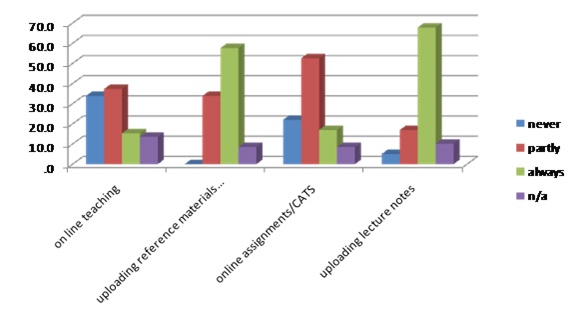
Figure 2. Areas of use of e-learning by lecturers.
The reason why the majority of lectures opted to only upload notes was that they did not work closely with technical staff in the development and uploading of the modules on the universities’ LMS. Additionally, they lacked adequate time to devote to the development of interactive modules. These challenges were compounded by the fact that most universities lacked appropriate and adequate e-learning infrastructure to support the development of interactive e-learning content.
Although over 90% of the interviewed students were aware of e-learning, only about 35% of them used it (Table 2). There was not a remarkable difference on the usage of e-learning among students in the seven public universities.
Table 2
Percentage of Students Using E-Learning
| University | Percentage (%) |
| KU | 37.8 |
| JKUAT | 34.9 |
| UoN | 35.4 |
| MAU | 36.1 |
| EU | 32.5 |
| MMUST | -* |
| MU | 33.3 |
| TOTAL | 35.0 |
* Note. There were no undergraduate courses offered online during the time of this research
Unfortunately, many of the students who adopted e-learning rarely used it to access lectures online but as Figure 3 shows, a sizeable number used it to download lecture notes, access and take CATs online, and submit assignments online.
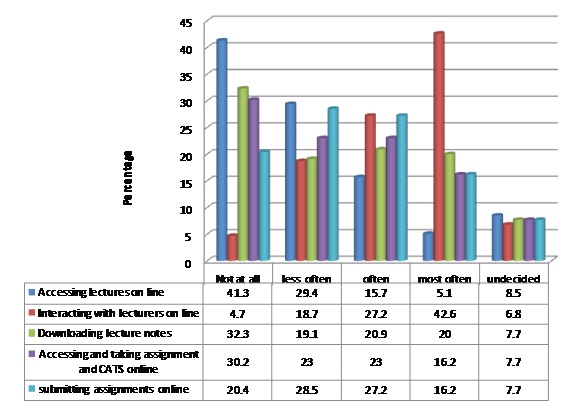
Figure 3. Use of LMS in selected pedagogical aspects.
Majority of interviewed students (65%) said that they did not use e-learning. Their explanation was that if their lecturers did not use it, they too could not use it. Occasionally, they downloaded notes from the LMS in a process they described as difficult and slow because of poor internet connectivity. Like their lecturers, many students preferred lecture notes, handouts, or modules in hard copy form because of the following reasons:
An analysis of course registration in the universities was used to assess the status of e-learning in public universities. This analysis involved only the 35% of students who reported to have used e-learning in one way or another. The idea was to determine the number of courses offered online versus those still offered F2F.
Findings of the study revealed that the number of courses offered per semester varied from university to university, ranging from 6 to 10 (Table 3). EU, on average, offered the lowest number of course units per semester while MU offered the highest. Interestingly, study findings revealed that an overwhelming majority of course units on offer during the time of this study were not offered online, but F2F. With the exception of KU, over 50% of the students in the other universities reported not to have taken any units online. The majority of the students who took online units registered for one to two units with KU leading at 60% followed by MAU at 40.7%. The number of students taking more than two units was reduced drastically in all universities.
The foregoing analysis renders credence to the fact that e-learning in public universities is still at an infant stage.
Table 3
Courses per Semester and Those Done Online (September-December 2012)
| University and no. of course units | Number and percentage of course units offered online | Total | |||
| 0 | 1–2 | 3–4 | 4 & above | ||
| KU 7 | 29.1 | 60 | 10.9 | 0 | 100 |
| JKUAT 8 | 53.6 | 34 | 7.0 | 5.4 | 100 |
| UoN 7 | 58.0 | 25.4 | 9.3 | 7.3 | 100 |
| MAU 8 | 52.8 | 40.7 | 6.5 | 0 | 100 |
| EU 6 | 53.2 | 27.5 | 16.1 | 3.2 | 100 |
| MU 10 | 50.4 | 37.2 | 9.2 | 3.2 | 100 |
About 53% and 41% of students indicated a strong preference for e-learning and F2F pedagogy methods, respectively. The remaining 5% preferred blended approach as the best way of content delivery (Figure 4). This outcome was surprising in view of the fact that a majority of the students (65 %) had never used e-learning throughout their university live. It was, however, interpreted to imply that although students had never used e-learning, they were aware of its potential benefits and would be happy to use it.
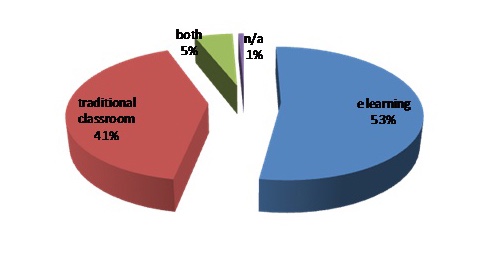
Figure 4. Preferred method of pedagogy among students.
The study also assessed the lecturers’ preferred mode of teaching (Figure 5).
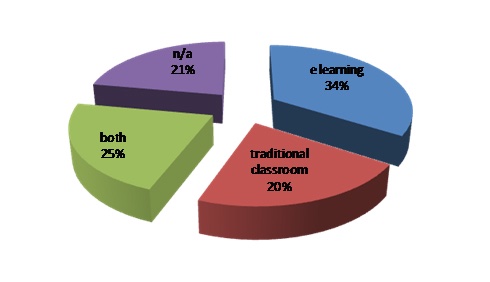
Figure 5. Preferred mode of teaching.
Although a fairly large percentage of the lecturers preferred e-learning as a mode of teaching, a sizable percentage preferred the blended method of teaching. Blended learning, which is also known as hybrid and mixed-mode, is a formal education program in which students learn at least in part through online and F2F delivery of content and instruction. It is an approach through which F2F classroom methods are combined with computer-mediated activities. Most universities world over prefer the blended approach to pure online or the traditional F2F approaches. This method of pedagogy is preferred because it serves to facilitate a simultaneous independent and collaborative learning experience, which contributes significantly to effective learning. In some instances, students’ attitudes towards learning are also improved.
However, blended learning has a strong dependence on the technical resources with which the blended learning experience is delivered. These tools need to be reliable, easy to use, and up to date in order for the use of the Internet to have a meaningful impact on the learning experience. Additionally, ICT literacy can serve as a significant barrier for students attempting to get access to the course materials, making the availability of high quality technical support paramount.
Another important indicator of status of e-learning is the level of interactivity of the content uploaded on the LMS. Study findings indicated that most of the course modules were not interactive at all; hence quality of e-learning is still relatively low. Indeed, over 60% of the course modules are merely uploaded lecture notes. Findings of this study revealed that most of the lecturers used their LMS as a document repository where materials such as PowerPoint presentations, lecture notes, and essential readings are uploaded; as Sheely (2006) observed, a typical course in any subject will inevitably become an electronic file store for materials, which previously were included in course handbooks or given out in the classroom. This was confirmed by students who reported that majority of lecturers who used e-learning simply uploaded their notes as Microsoft Word or PDF files.
An interactive e-learning module contains a high degree of interactivity around a specific lesson or concept and is centred on utilization, inclusion or both of the following:
Out of the 32% lecturers who used e-learning, only 37% termed the content on their LMS interactive while 59% didn’t think their modules were interactive (Figure 6). In all the seven public universities lecturers described their modules as comprising mainly of uploaded notes (Figure 7).
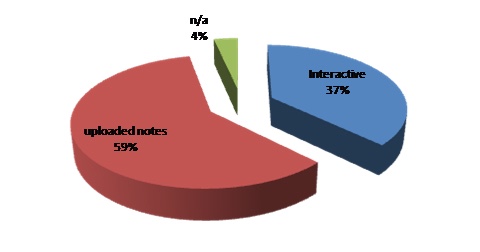
Figure 6. Nature of content on the LMS.
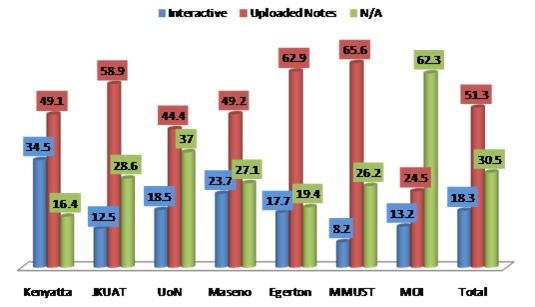
Figure 7. Percentage response on nature of module content by university.
In interrogating lecturers and students to establish the interactivity of the modules uploaded on their LMS, the findings of this study revealed that little effort was made in making e-learning interactive. A majority of the lecturers said that they did not include some of the most important attributes that make a module interactive. Figure 8 shows that about 64% of the interviewed lecturers said that they did not include clearly stated and measurable objectives while about 59% reported that their modules lacked discussion forums. Another 68% and 77% of the lecturers said that their modules did not have audio visual learning activities or assignments/quizzes/self-assessment tests, respectively.

Figure 8. Key attributes of interaction.
Further investigation revealed that the major reason behind lack of interactivity is that most modules are developed by the Subject Method Expert (SME) without involving Technical Experts (TEs). But while the SME is an expert in terms of the content to be presented in a module, they lack the technical knowhow on conversion of their content into an interactive computer based lesson. According to Connolly, Jones, and O’Shea (2006), the best way of developing interactive modules is by the TE and SME working together. This is because it is always very unlikely that the TE is actually the SME. Therefore, the SMEs should assist the TE to develop the module. Ideally, the two should work in tandem until the project is completed. Most likely though, the SMEs have underestimated the amount of work that the TE requires from them. Even when using a tested process, SMEs will not be able to devote all their time to the e-learning module. While the SMEs have all the knowledge and information regarding the subject matter, it is the TE’s job to distil those ideas into online working theory.
Another interesting finding that supports the low status of e-learning in the country is the fact that not all e-learning technologies are used. The most commonly used e-learning technologies in the public universities are Web-based learning, computer-based learning, CD-ROM, wireless and mobile technology, and Emails (Table 4). This means that not all the technologies available for e-learning are utilized.
Table 4
Type of E Learning Technologies by 2012
| Technology | UoN* | KU | EU | MMUST | MAU | JKUAT | MU |
| Web-based learning | X | X | X | X | X | X | X |
| Computer-based learning | X | X | X | X | X | X | X |
| Virtual classroom | |||||||
| Content delivery via e-networks | |||||||
| Audio or video tape | |||||||
| Satellite TV | |||||||
| Video conferencing | |||||||
| CD-ROM | X | X | X | X | X | X | |
| Wireless and mobile technology | X | X | X | X | X | X | X |
| Ipods or tablets | |||||||
| Emails | X | X | X | X | X | X | X |
*Full names of the universities’ abbreviations appear in page 6
Note. X indicates utilization of the resource
Public universities use different LMSs to host their e-learning programmes, with Moodle appearing to be most popular. All the universities used LMSs that are open sources. The choice of the LMS depended on the ease to upload, download, and access module information; interaction among different users; and the versatility of the e-platforms.
Students were asked to evaluate the platform used in their university. A majority of them were contented with their LMS. The most liked attribute of the LMS was usability (Table 5) which is the extent to which software can be used to achieve specified goals efficiently and effectively. Students said that their LMSs were easy to use and navigate through a course. They explained that the LMS enabled them to access and download notes with ease.
Similarly, lecturers were asked to rank the quality of the LMS they used. In terms of ease of uploading notes, assignments, and references, most lecturers said the LMSs were satisfactory. With regard to allowing for interaction, the majority of lecturers ranked the LMS average and good across the universities. Finally, in terms of ease of use and inclusion of audio and visual teaching materials in the lectures, majority of lecturers ranked the LMS as average.
Table 5
Rank of Quality and percentage of usage of the LMS by Students
| Rank (1–4 in ascending order of liking (4 is most liked) | KU | JKUAT | UoN | MAU | EU | MU | |
| Easy to access & download materials | 1 | 11.1 | 24.2 | 12.9 | 20.5 | 11.4 | 20.0 |
| 2 | 31.1 | 36.4 | 16.1 | 25.1 | 25.7 | 6.7 | |
| 3 | 22.2 | 18.2 | 35.5 | 28.2 | 14.3 | 26.7 | |
| 4 | 33.3 | 18.2 | 29.0 | 43.6 | 48.6 | 40.0 | |
| Undecided | 2.2 | 3.0 | 6.5 | 2.6 | 0.0 | 6.7 | |
| Easy to follow lectures | 1 | 24.4 | 27.3 | 9.7 | 33.3 | 37.1 | 30.0 |
| 2 | 17.8 | 24.2 | 25.8 | 28.2 | 40.0 | 33.3 | |
| 3 | 26.7 | 36.4 | 22.6 | 23.1 | 8.6 | 20.0 | |
| 4 | 28.9 | 9.1 | 25.8 | 12.8 | 8.6 | 20.0 | |
| Undecided | 12.2 | 13.0 | 16.1 | 12.6 | 25.7 | 16.7 | |
| Easy to follow assignment | 1 | 24.4 | 24.2 | 6.5 | 28.2 | 20.0 | 26.7 |
| 2 | 15.6 | 21.2 | 12.9 | 20.5 | 11.4 | 20.0 | |
| 3 | 20.0 | 24.2 | 35.5 | 28.2 | 31.4 | 20.0 | |
| 4 | 37.8 | 27.3 | 32.3 | 20.5 | 28.6 | 26.7 | |
| Undecided | 2.2 | 3.0 | 12.9 | 2.6 | 8.6 | 6.7 | |
| Easy to interact with fellow students and lecturers | 1 | 33.3 | 42.4 | 19.4 | 33.3 | 40.0 | 26.7 |
| 2 | 17.8 | 9.1 | 54.8 | 28.2 | 17.1 | 33.3 | |
| 3 | 11.1 | 24.2 | 0.0 | 15.4 | 14.3 | 26.7 | |
| 4 | 35.6 | 21.2 | 12.9 | 20.5 | 20.0 | 6.7 | |
| Undecided | 2.2 | 3.0 | 12.9 | 2.6 | 8.6 | 6.7 | |
All the public universities have both fibre and wireless connectivity. However, 76% of the respondents said that the bandwidth as well as the number of hot spots to access Internet are not sufficient. Interviews with some of the senior managers of the universities revealed that the cost of Internet was high and prohibitive. Additionally, the remote location of some areas, far from Internet signal was described as a major hindrance to Internet connectivity. This finding agrees with Walimbwa (2008) and Hollow and ICWE (2009) who found that limited bandwidth due to prohibitive cost hinders the development of e-learning in institutions of higher learning in East Africa.
The ability and confidence of a teacher in using computers and other technologies in imparting knowledge and skills to their students is imperative for e-learning. This ability is dependent on the teacher’s prior experience in the technology’s use and the level of skills acquired. Where lecturers lack confidence in the use of technology, chances are high that they would either not use it or use it ineffectively. In both cases, the chances of a successful implementation of e-learning would be low. Interviews with key university managers involved in academic matters revealed that they lacked adequate capacity to handle e-learning and linked it to its low adoption.
Limited ICT skill was attributed to the fact that majority of the lecturers (55%) were not trained on e-learning and were therefore not competent to handle online courses (Figure 9). This group of lecturers was not even familiar with their university’s LMS. Only about 17% of the lecturers had undergone formal training on e-learning. Majority of these lecturers were trained in-house through arrangements made by their universities. Another 20% of respondents acquired e-learning knowledge through self training while 8% were trained by colleagues.
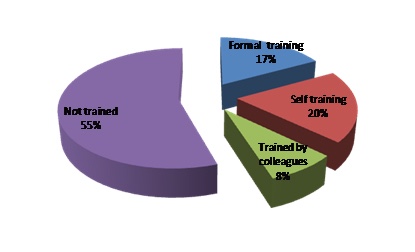
Figure 9. Level of e-learning competency among lecturers.
It is true that e-learning is a familiar concept among students, academic staff, and administrators in public universities. However, the outcome of this study indicated that e-learning in most of the universities is still emerging as an alternative and complimentary pedagogy. Viewed from the channels of diffusion of innovations as expressed by Rogers (1995), it appears that universities are at the early stage of adoption during which most people and organizations are not yet convinced about the usefulness of an innovation and are indecisive as to whether to adopt it or not. These findings are similar to those of Nyerere et al. (2012) whose study established that most of the academic staff (68%) that facilitated ODeL had not been given special training on the delivery of content using this mode of pedagogy.
As shown in the literature review above, Kenya is not the only country where e-learning is still at its infancy. Other countries in Africa such as Nigeria, Tanzania, and Uganda are also grappling with challenges of low adoption of this mode of pedagogy. For example, Mpofu et al. (2012) noted that 97.5% of the ODeL facilitators in Zimbabwe had not received relevant training, and were therefore ill equipped to handle e-learning pedagogy.
The overall findings of this study revealed that public universities have not yet fully adopted e-learning as a mode of pedagogy and have not made significant strides in that direction. This was evidenced by lack of senate approved e-learning policies which hindered a uniform and structured implementation of e-learning in a majority of the public universities. Additionally, the low percentage of lecturers and students using e-learning to date alludes to the fact that e-learning in public universities is still at its infancy stage. Where modules have been uploaded on the learning management systems, they are of low quality and lacking in interactivity. The e-learning infrastructure and capacity are still insufficient in terms of Internet bandwidth, computers, and ICT skills.
Arising from the findings of this study, the following recommendations if implemented will lead to improvement of e-learning in public universities in Kenya:
This work was supported by the funding from the National Council of Science, Technology and Innovation (NACOSTI) formerly National Council for Science and Technology (NCST) under research grant contract number NCST/5/003/W/2nd CALL/90. We are indeed grateful for their support.
Allen, I., & Seamen, J. (2008). Seizing the opportunity: The quality and extent of online education in the United States. Needham, MA: Sloan.
Boit J. M., & Kipkoech, L. C. (2012). Liberalization of higher education in Kenya: Challenges and prospects. International Journal of Academic Research in Progressive Education and Development, 1(2), 33–41.
Connolly, M., Jones, N., & O’Shea, J. (2005). Quality assurance and e-learning: Reflections from the front line. Quality in Higher Education, 11(1), 59–67. doi: 10.1080/13538320500077660
Gudo, C. O., Olel, M. A., & Oanda, O. I. (2011). University expansion in Kenya and issues of quality education: Challenges and opportunities. International Journal of Business and Social Science, 2(20), 203–214. Retrieved from http://www.ijbssnet.com/journals/Vol_2_No_20_November_2011/22.pdf
Hollow, D., & ICWE (2009). E-Learning in Africa: Challenges, priorities and future direction. Retrieved from http://www.gg.rhul.ac.uk/ict4d/workingpapers/Hollowelearning.pdf
Kamba, M. A. (2009). Problems, challenges and benefits of implementing e-learning in Nigerian universities: An empirical study. International Journal of Emerging Technologies in Learning, 4(1), 66–69.
Kasse, J. P., & Balunywa, W. (2013, February). An assessment of e-learning utilization by a section of Ugandan universities: Challenges, success factors and way forward. Paper presented at the International conference on ICT for Africa 2013, Harare, Zimbabwe.
Mpofu, V., Samukange, T., Kusure, L. M., Zinyandu, T. M., Denhere, C., Huggins, N., … Sithole, F. (2012). Challenges of virtual and open distance science teacher education in Zimbabwe. International Review of Research in Open and Distributed Learning, 13(1), 207-219. Retrieved from http://www.irrodl.org/index.php/irrodl/article/view/968/2083
Ndume, V., Tilya, F. N., & Twaakyondo H. (2008). Challenges of adaptive e-learning at higher learning institutions: A case study in Tanzania. International Journal of Computing and ICT Research, 2(1), 47–59.
Nyerere, J. K. A., Gravenir, F. Q., & Mse, G. S. (2012). Delivery of open, distance and e-learning in Kenya. International Review of Research in Open and Distributed Learning, 13(3), 185–205. Retrieved from http://www.irrodl.org/index.php/irrodl/article/view/1120
Odhimbo, O. O. (2009). Comparative study of the e-learning platforms used in Kenyan UNiveristies: Case study of Jomo Kenyatta University of agriculture and technology and United States international university. Retrieved from https://su-plus.strathmore.edu/bitstream/handle/11071/3261/Comparative
Rogers, E. M. (1995). Diffusion of innovations (4th ed). New York, NY: Free Press.
Sanga, C., Sife, A. S., & Lwoga, E. T. (2007). New technologies for teaching and learning: Challenges for higher learning institutions in developing countries. International Journal of Education and Development using Information and Communication Technology (IJEDICT), 3(2), 57–67.
Sheely, S. (2006). Persistent technologies: Why can’t we stop lecturing online? Paper presented at the 23rd Annual ASCILITE Conference: Whose learning? Who’s technology? Sydney, Australia.
Walimbwa, M. (2008 ). Integrating e learning in teaching and research in upcoming East African regional Universities. Paper presented at the meeting CNIE Banff, Alberta, Canada. Retrieved from http://www.slideshare.net/Walimbwa/elearning-in-east-african-universities


Status of E-Learning in Public Universities in Kenya by George L. Makokha and Dorothy N. Mutisya is licensed under a Creative Commons Attribution 4.0 International License.